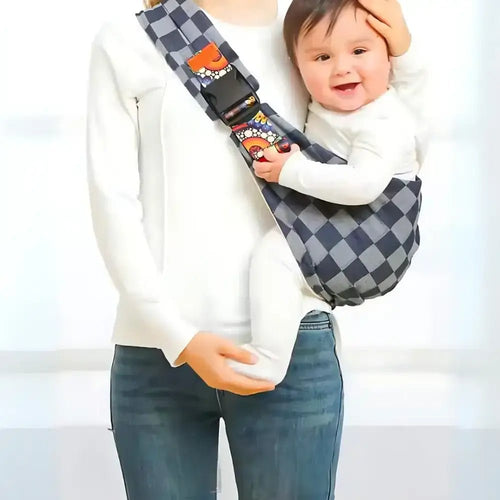
Willow Wearable Breast Pump: A Comprehensive Guide for Modern Moms
Hands-free pumping can feel like magic when your day is a blur of feeds, naps, meetings, and errands. Willow’s wearable pumps bring that freedom into real life—letting you move, work, and care for your baby while you pump discreetly inside your bra.
Quick take: Willow has two main lines—Willow 360 and Willow Go. Both are in-bra, cord-free, app-connected wearables. The 360 is marketed as 100% leak-proof in any position and uses 4 oz milk bags or 4 oz reusable containers, while Go prioritizes comfort and capacity with 5 oz (optional 7 oz) reusable containers and up to −280 mmHg suction strength. Choose based on your mobility needs, budget, and typical session volume. [Willow 360 / spec source] See refs.
Willow at a Glance: 360 vs Go
- Willow 360 (formerly 3.0): Fully in-bra, no external tubes or motors; marketed as the only pump that’s 100% leak-proof in any position (helpful for bending over or moving around). Uses 4 oz leak-proof bags or 4 oz reusable containers; comes with 24 mm flanges and 21 mm inserts. App-connected. [Ref]
- Willow Go: A lighter-feeling wearable focused on value and comfort with 5 oz containers (or optional 7 oz containers); up to −280 mmHg suction; closed system; app-connected. [Ref]
Key Benefits Moms Love
- True mobility: Pump in your bra while walking to the nursery, hopping on a quick call, or loading the stroller.
- Discreet profile: Low-profile cup shape under soft bras and nursing camis.
- App support: Start/stop, track sessions and output, and get tips from your phone (and for 360, even your watch).
- Fewer parts to juggle: Especially with 360’s two-part clean (motor stays out of the wash).
Capacity, Suction & Output Expectations
With Willow 360, each side holds up to 4 oz whether you use the bag or the 360 reusable container. Willow Go ships with 5 oz containers and supports optional 7 oz containers for higher-volume sessions. Go also advertises suction up to −280 mmHg. Note that total output varies by time of day, hydration, fit, and your unique supply. Wearables are fantastic for flexibility; many moms still keep a traditional pump for power sessions or exclusive pumping routines.
Fit & Comfort: Getting the Size Right
Willow 360 includes 24 mm flanges plus 21 mm inserts; Willow offers additional sizing resources in-app and online. Measure the base diameter of your nipple (not the areola), then match a flange/insert size that leaves ~1–2 mm of clearance. A good fit reduces rubbing and improves output. If you’re unsure, an IBCLC can help with sizing.
Fit Troubleshooting & Seal Checklist (Hands-On)
Even with the correct flange or insert size, early sessions can feel inconsistent until you dial in your personal setup. Use this short, repeatable routine for your first week of wearable pumping to improve comfort and output.
10-Minute Fitting Ritual
- Warm up (1–2 min): Gentle breast massage or a warm compress softens tissue and encourages flow.
- Center carefully: Align nipple in the tunnel with 1–2 mm clearance. If you feel rubbing or see blanching, pause and re-seat.
- Level & lift: Keep the cup level; use a supportive, non-underwire bra so the edges seal evenly.
- Start low, step up: Begin on a lower stimulation level, then step up gradually to a comfortable expression level.
- Check rhythm: After 2–3 minutes, reassess: any air sounds, tugging, or asymmetry? Re-center if needed.
Seal & Fit Checklist
- No pinching or blanching: Edges of the nipple stay rosy, not white.
- Even contact: Cup edges touch the breast all around—no visible gaps.
- Quiet seal: Minimal hissing/air noises after let-down begins.
- Comfort first: A comfortable level often yields better output long-term than a single higher setting.
Common Signs You May Need a Size Tweak
- Persistent rubbing, nipple elongation beyond comfort, or oval friction marks.
- Repeated milk spray against the tunnel sides rather than a smooth stream into the container.
- One breast consistently under-performs despite identical timing and prep.
Micro-Adjustments That Help
- Insert swap: Try the next insert size up/down and retest for 2–3 sessions.
- Bra tweak: Slightly tighter band or different fabric can stabilize the cup and stop micro-leaks.
- Body position: Sit tall or recline gently; avoid twisting at the waist during let-down.
If soreness persists beyond a few days, or output remains low despite good fit and consistent sessions, consider a quick check-in with an IBCLC for personalized sizing and latch insights.

Milk Bags vs Reusable Containers
- Leak-proof bags (360): Great for maximum movement; self-sealing convenience; ideal for on-the-go and lying/bending positions the 360 is known for.
- Reusable containers (360 & Go): Eco-minded, dishwasher-safe, easy pour-off. 360 containers hold 4 oz; Go offers 5 oz and optional 7 oz.
Cleaning & Care
Disassemble after each session. Wash parts in warm, soapy water (many are dishwasher-safe; check your model’s manual). Air-dry on a clean rack. Replace flexible parts (valves, membranes) on the brand’s suggested cadence to maintain suction and hygiene.
Battery Life & Noise
Expect roughly a few sessions per charge (varies by level, duration, and battery age). Most users find both 360 and Go quiet enough for calls with a door closed or a bit of background noise.
Insurance & Where to Order
Many U.S. plans cover wearable pumps. Check benefits early in the third trimester. Durable Medical Equipment (DME) partners—like Byram and Edgepark—simplify verification and paperwork. If your plan doesn’t fully cover the pump you want, ask about upgrades, FSA/HSA, or financing.
Back-to-Work & Travel Pumping Playbook
Wearables shine when your calendar gets busy. A little pre-planning makes office days, errands, and flights feel routine. Use this playbook to pack smart, protect output, and keep milk handling simple.
Sample Weekday Rhythm
- Morning: Nurse or pump on waking; pack two clean cup sets in a zip pouch.
- Mid-morning (work): 15–20 min wearable session during email or a stand-up meeting.
- Lunch: Pump again; transfer milk to labeled storage bags or containers; place in a cooler with ice packs.
- Mid-afternoon: Short maintenance session to stay comfortable and support supply.
- Evening: Nurse/pump at home; wash parts and set overnight charge.
Go-Bag Essentials
- Spare valves/membranes, a compact dish soap, and a small bottle brush.
- Two food-safe zip bags: one for clean parts, one labeled “used” until wash.
- Insulated cooler sleeve + flat ice pack; permanent marker for labels.
- Portable power bank + short charging cable; outlet plan for longer days.
On-the-Go Cleaning
If a full wash isn’t possible between sessions, follow your model’s guidance on interim storage and safe re-use windows. Many parents rotate two part sets, then do a thorough wash at home. Air-dry on a clean rack; avoid trapping moisture in closed containers.
Output Guardrails (Practical, Not Perfection)
- Consistency beats intensity: Three steady wearable sessions typically outperform one rushed power session in a busy workday.
- Hydration cues: Keep a water bottle at your desk; light snacks can smooth let-down timing.
- Comfort first: If suction feels “too much,” step down a level—sustained comfort helps supply more than brief high settings.
Travel Notes
- Flights: Pack parts in a clear pouch; keep milk accessible if security screening requires inspection. Bring extra bags/containers for connections.
- Hotels: Request a mini-fridge with a freezer compartment or extra ice packs; label stored milk clearly.
- Time-zone shifts: Aim for your “home-body clock” session spacing on day one, then adjust gradually.
Real-Life Tips for a Smoother Start
- Use a supportive, non-underwire bra that keeps cups snug and level.
- Center carefully—re-seat if you feel rubbing or hear excess air.
- Warm compress + gentle breast massage before sessions can boost flow.
- Label milk with date/time; rotate oldest first.
Comfort Care Between Sessions (Natural Support)
If your nipples feel tender from frequent pumping, many moms find relief with silver nursing cups. These small 925/999-silver domes rest inside your bra, creating a clean micro-environment between feeds to help protect sensitive skin. Learn more or shop here: Go Mommy® Silver Nursing Cups.
Who Is Each Model Best For?
- Choose Willow 360 if you prioritize spill-resilience in lots of positions, want the option to use bags, and value the smallest parts-to-clean workflow.
- Choose Willow Go if you want larger container capacity (5–7 oz), strong suction, and great comfort-value balance.
FAQ
Can I pump while lying down?
Willow 360 is marketed as leak-proof in any position; many users still prefer upright or reclined positions for comfort. For Go, best results are upright or moderately reclined. Always follow your model’s manual.
How long is a typical session?
Most sessions run 15–25 minutes depending on output goals and comfort. Track what works for you in the app.
Is a wearable enough as my only pump?
Plenty of moms use wearables as their primary pump, while others keep a plug-in model for specific use cases (e.g., power pumping).
References
- Willow 360 product page (claims, sizing, bags/containers). Willow
- Willow Go pump kit (capacity & 7 oz option). Willow
- Go suction up to −280 mmHg (product FAQs/retail). Amazon
- 360 reusable container 4 oz capacity. Willow
- Insurance partners. Byram & Edgepark
Last updated: September 2025 • Editor: Go Mommy®


